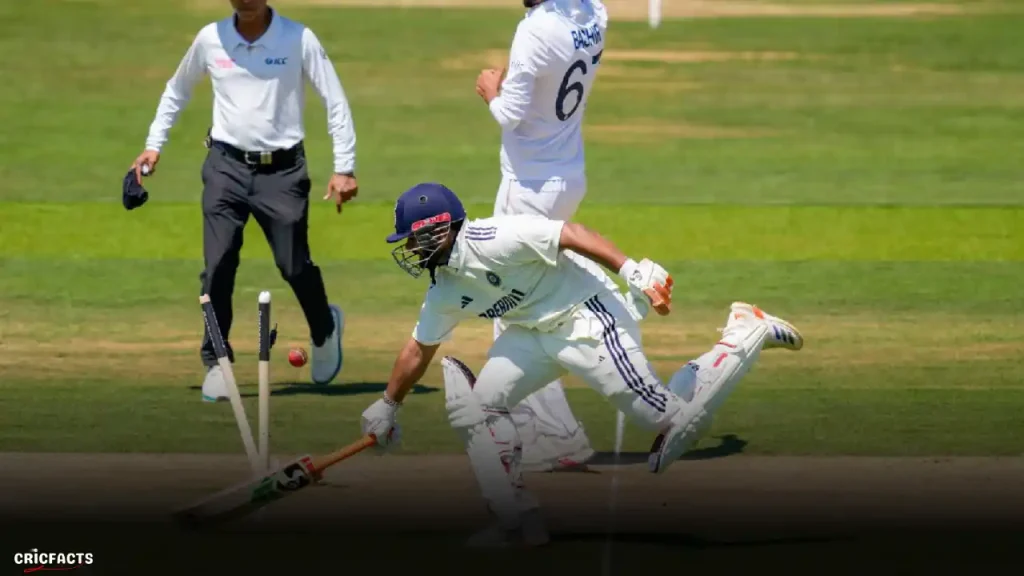12 Types of Outs in Cricket Explained: Full List of Dismissals
In cricket, scoring runs may grab attention, but dismissing batters is equally vital. An innings ends when 10 players are out, making dismissals a key part of match strategy.
While most fans know the common ways bowled, caught, or run out the Laws of Cricket define 12 official types of dismissals. Some occur often, while others are rare but still valid under the rules.
This guide explains all 12 types of outs in cricket.

List of 12 Types of Outs in Cricket
Here’s a quick overview of all 12 official types of outs (dismissals) in cricket:
| No. | Type of Out | Description |
|---|---|---|
| 1 | Caught | The batter hits the ball and a fielder catches it before it touches the ground. |
| 2 | Bowled | The ball hits the stumps and dislodges the bails after being bowled. |
| 3 | Leg Before Wicket (LBW) | The ball hits the batter’s leg in line with the stumps, preventing it from hitting the wicket. |
| 4 | Stumped | The wicketkeeper removes the bails when the batter is outside the crease and not attempting a run. |
| 5 | Run Out | A fielder hits the stumps with the ball before the batter reaches the crease while running. |
| 6 | Obstructing the Field | The batter deliberately blocks a fielder’s throw or fielding attempt. |
| 7 | Hit Wicket | The batter accidentally hits their own stumps while batting or moving. |
| 8 | Timed Out | The next batter fails to reach the crease within 3 minutes after a dismissal. |
| 9 | Hit the Ball Twice | The batter strikes the ball more than once before a fielder touches it. |
| 10 | Retired Out | The batter leaves the field voluntarily and does not return. |
| 11 | Mankading (Run Out at Non-Striker’s End) | The bowler runs out the non-striker for leaving the crease early before delivering the ball. |
| 12 | Handling the Ball | The batter touches the ball with a hand not holding the bat without the fielding side’s consent. |
How Do These Dismissals Work in Cricket?
Caught
A batter is caught out when they hit the ball and it is caught cleanly by a fielder, bowler, or wicketkeeper before it touches the ground. This is the most common dismissal and often showcases sharp fielding reflexes.
Bowled
If the bowler delivers a ball that hits the stumps and removes the bails, the batter is declared bowled. It’s one of the most straightforward and celebrated dismissals, showing bowling accuracy and control.
Leg Before Wicket (LBW)
LBW occurs when the ball strikes the batter’s leg (or body) in line with the stumps, preventing it from hitting the wicket. Umpires decide based on the ball’s trajectory, often using technology like DRS (Decision Review System).
Stumped
When a batter steps out of their crease and misses the ball, the wicketkeeper can quickly remove the bails to dismiss them. This is known as stumped, and it’s a common sight in spin bowling.
Run Out
A run out happens when the fielding side hits the stumps before the batter completes a run. It usually results from quick reactions and accurate throws from the fielders.
Obstructing the Field
This rare dismissal occurs if a batter deliberately blocks a fielder’s attempt to collect or throw the ball. The umpire’s judgment is key to deciding intent.
Hit Wicket
If a batter dislodges the stumps with their bat, leg, or clothing while playing a shot or moving, they are hit wicket. This often occurs due to a loss of balance or over-extension.
Timed Out
A batter must be ready to face the next delivery within 3 minutes. Failure to do so results in a timed out dismissal, ensuring smooth game flow and avoiding unnecessary delays.
Hit the Ball Twice
Under Law 33 of Cricket, if a batter deliberately hits the ball twice before a fielder touches it, they are declared out. This rule maintains fairness in play.
Retired Out
A batter can choose to leave the field voluntarily and not return, which is recorded as retired out. Unlike retired hurt, this is considered a dismissal and cannot be reversed.
Mankading (Run Out at Non-Striker’s End)
If the non-striker leaves the crease early before the ball is bowled, the bowler can legally remove the bails to dismiss them. This is known as Mankading, named after Indian cricketer Vinoo Mankad.
Handling the Ball
If a batter touches the ball with a hand not holding the bat without permission from the fielding side, they are given out for handling the ball. It’s a rare but valid dismissal.
Key Takeaways
- There are 12 official types of outs in cricket, as per the Laws of Cricket.
- Common dismissals: Caught, Bowled, LBW, Run Out.
- Rare dismissals: Timed Out, Obstructing the Field, Mankading, Handling the Ball.
- Each type adds strategy, skill, and unpredictability to the game.
Conclusion
In cricket, every wicket counts. From the classic caught behind to the rare timed out, these 12 dismissal types reveal the sport’s depth and strategy. Understanding them helps fans appreciate the fine balance between batting precision and bowling brilliance.

Moonda Ale
Cricket Content Writer at Cricfacts.com. A seasoned sports journalist who is working in the industry for more than two decades. He is now on facebook also.
